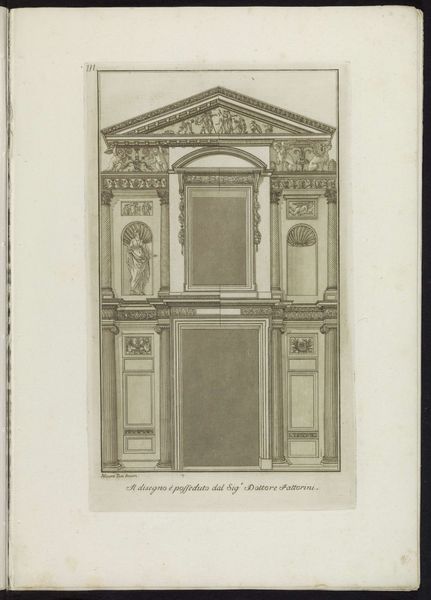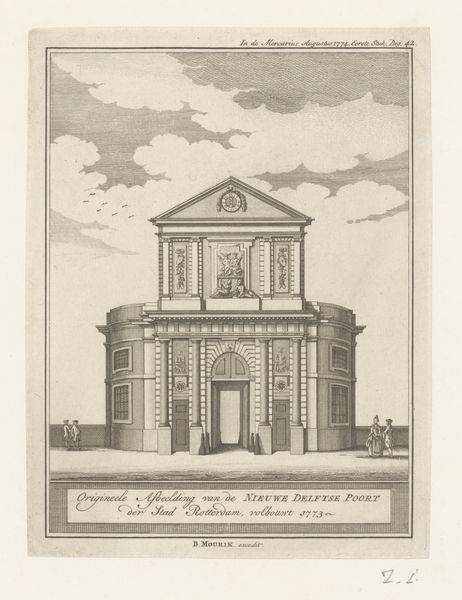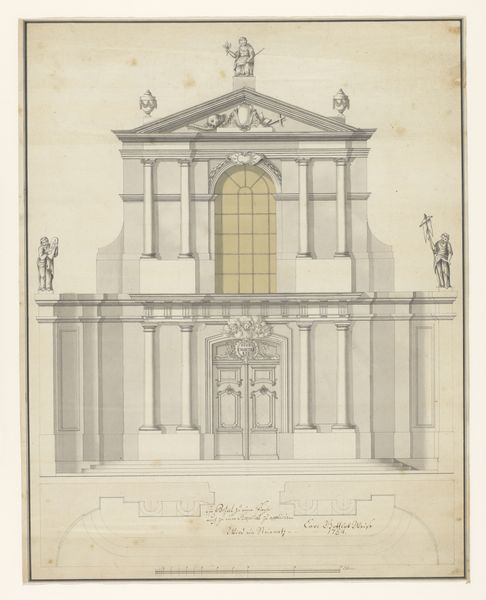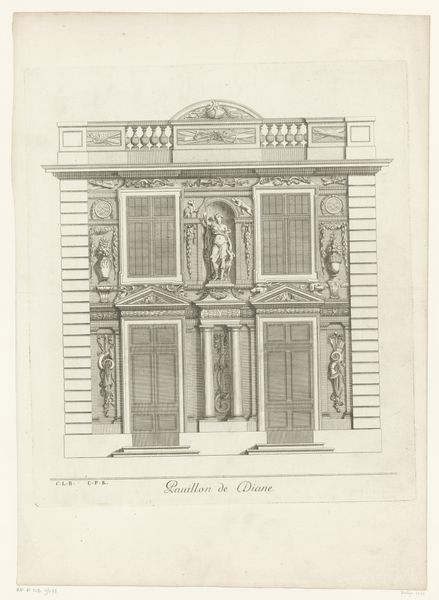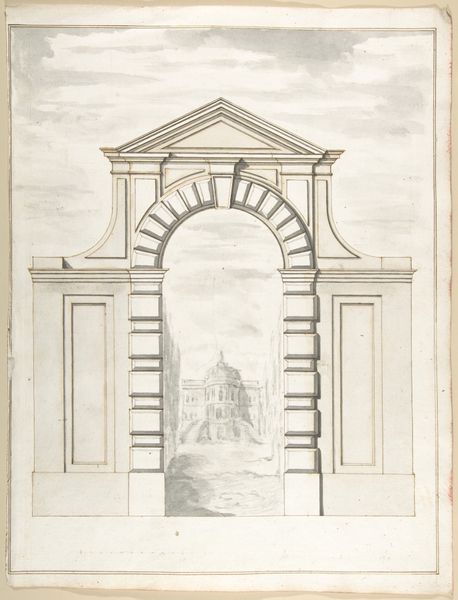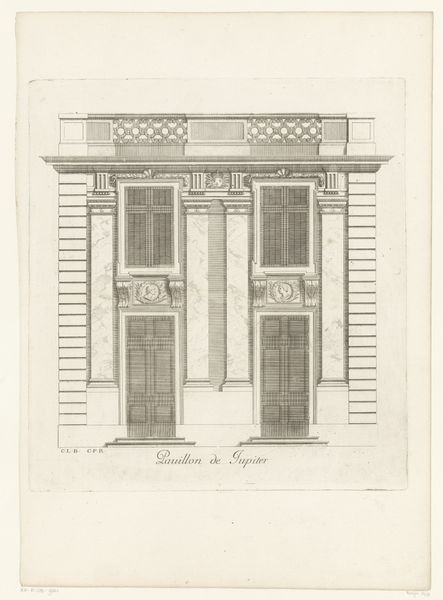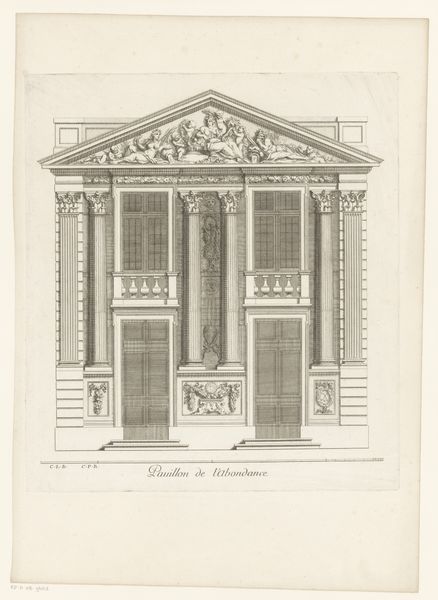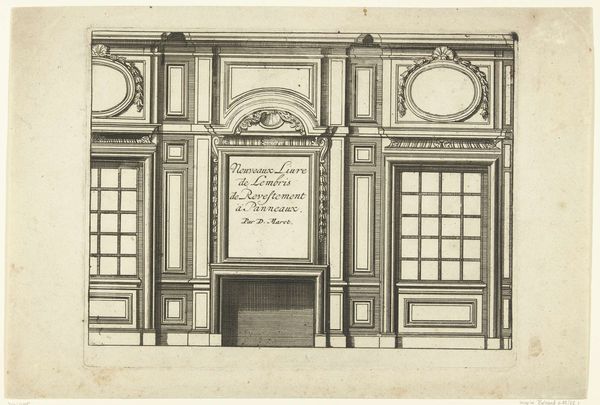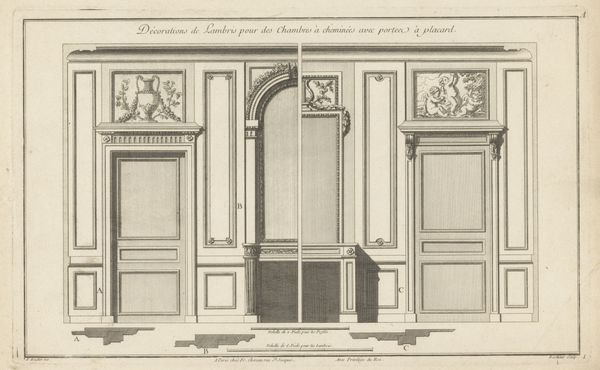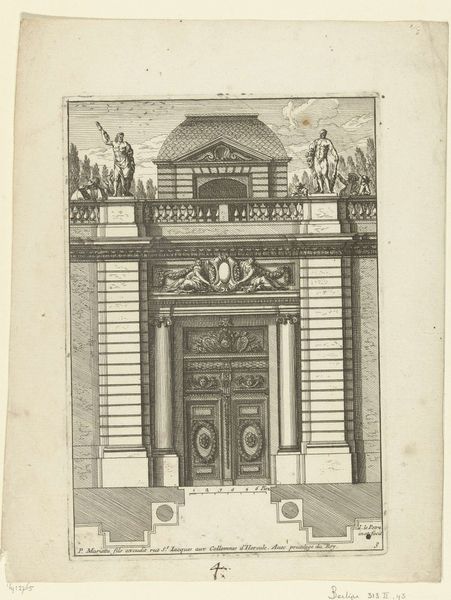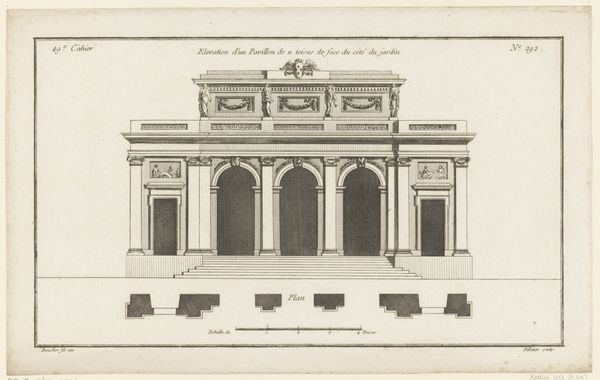
print, engraving, architecture
#
baroque
# print
#
classical-realism
#
perspective
#
line
#
cityscape
#
engraving
#
architecture
Dimensions: height 326 mm, width 209 mm
Copyright: Rijks Museum: Open Domain
Curator: Immediately striking is the rigid, almost diagrammatic, quality of this engraving. The precise lines create a sense of immense architectural weight and detail. Editor: Indeed. This is "Portiek van het Pantheon in Rome en drie tombes," or "Portico of the Pantheon in Rome and three tombs." It's an engraving created around 1682 by Sébastien Leclerc I, and it's part of the Rijksmuseum's collection. Curator: The very composition—the flat, frontal perspective—emphasizes the Pantheon's geometry, right? The way Leclerc uses line to suggest depth is quite compelling; look at the articulation of those colossal columns and their capitals. The attention given to this work indicates this artist was of high merit at this time. Editor: Precisely. Engravings like this one circulated widely in the 17th and 18th centuries, and disseminated architectural ideas and Roman aesthetics throughout Europe. Prints democratized access to Rome’s architectural grandeur. Before photography, how else could so many people understand a city's importance? Curator: And consider the tombs. Though rendered below the primary depiction of the Pantheon's portico, they seem designed to offer a formal balance; those curved edges play elegantly with the Pantheon’s rectilinear precision. A curious tension is generated here, formally. Editor: Placing funerary objects below this structure raises interesting issues concerning social status. The Pantheon has served diverse sociopolitical and religious purposes. One question to ask ourselves when experiencing this is “How has this function changed since the 17th century?" The addition of the tomb imagery suggests the space itself existed within an understanding of human power struggles. Curator: Yes. Leclerc has given us a meticulously organized study in contrasts. One can consider all that Leclerc presents to consider not only the literal subject here, but his individual understanding of it. Editor: Agreed. Hopefully, this conversation allows our audience new insights into the power of the Pantheon and tombs. Curator: The objective presentation of artistic intention provides a wonderful context to think about classical architecture.
Comments
No comments
Be the first to comment and join the conversation on the ultimate creative platform.
